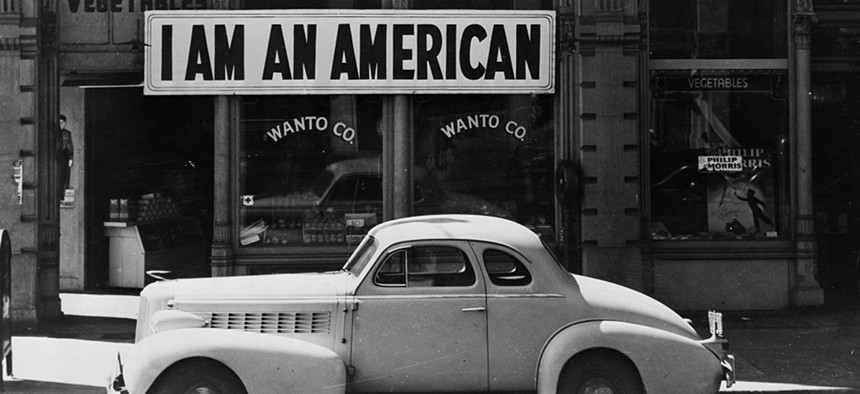'I Am an American': The Chilling Story of a Dorothea Lange Photo Taken After Pearl Harbor
More than 100,000 Japanese-Americans were imprisoned in "internment camps."
Seventy-five years ago today, Japan attacked the US naval base at Pearl Harbor in Hawaii. The Dec. 7 strike catalyzed US involvement in World War II, and prompted a dark period of xenophobia within the country.
Two months later, president Franklin Delano Roosevelt issued Executive Order 9066, authorizing the relocation and incarceration of anyone deemed a threat to national security. Due to this order, more than 100,000 men, women and children of Japanese ancestry were forced to move to isolated internment camps, where they would stay until the end of the war. The majority were American citizens .
The photo, by legendary US photographer Dorothea Lange, captures the simple protest left by one anonymous American business owner in his shop window in California. He would spend the rest of the war in an internment camp.

The caption from the Library of Congress :
Oakland, Calif., Mar. 1942. A large sign reading “I am an American” placed in the window of a store, at 13th and Franklin streets, on December 8, the day after Pearl Harbor. The store was closed following orders to persons of Japanese descent to evacuate from certain West Coast areas. The owner, a University of California graduate, will be housed with hundreds of evacuees in War Relocation Authority centers for the duration of the war.
This year, one surrogate for US president-elect Donald Trump referred to the internment of Japanese-Americans as a reasonable precedent for governmental action against minority groups, in the name of national security. It’s useful to remember what that looks like.



